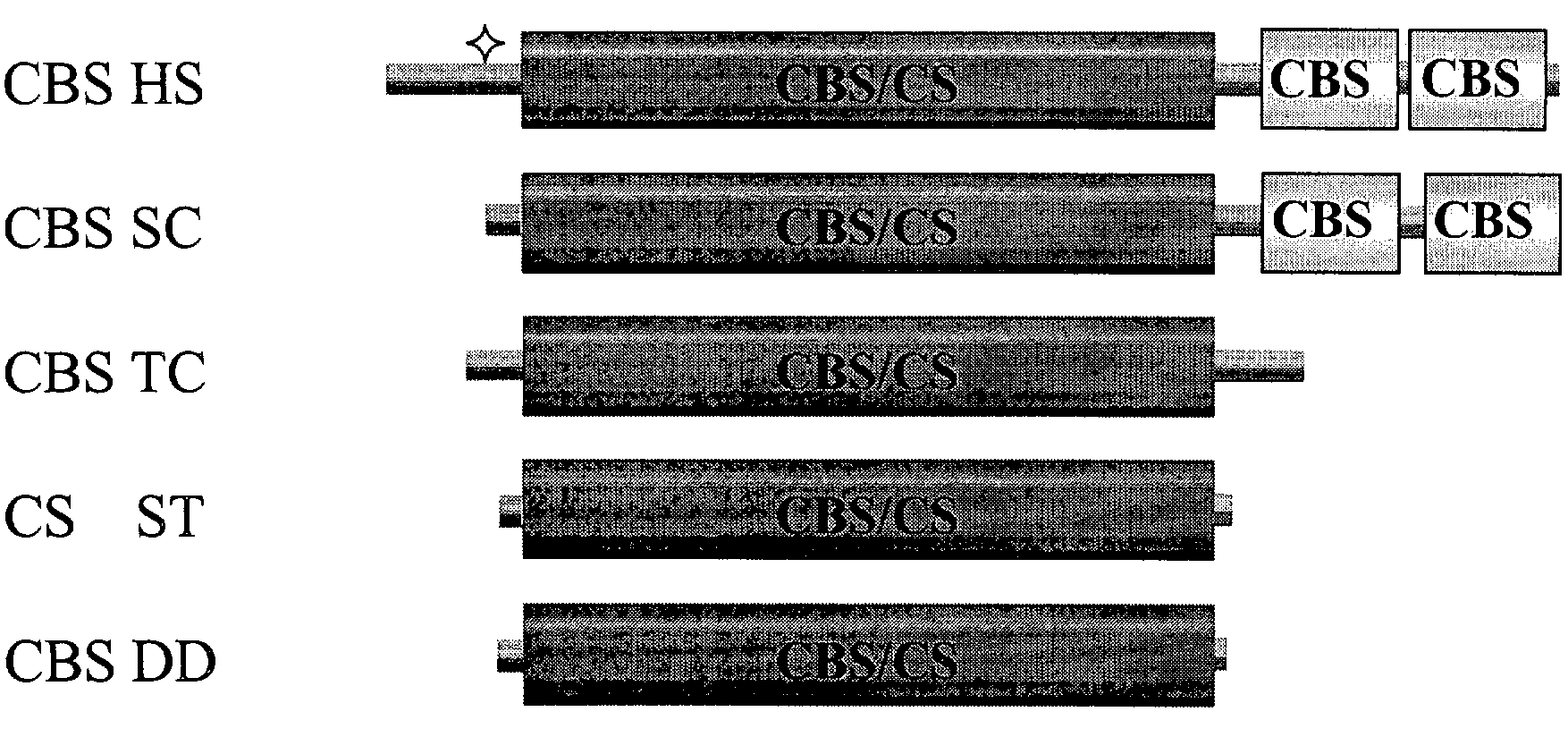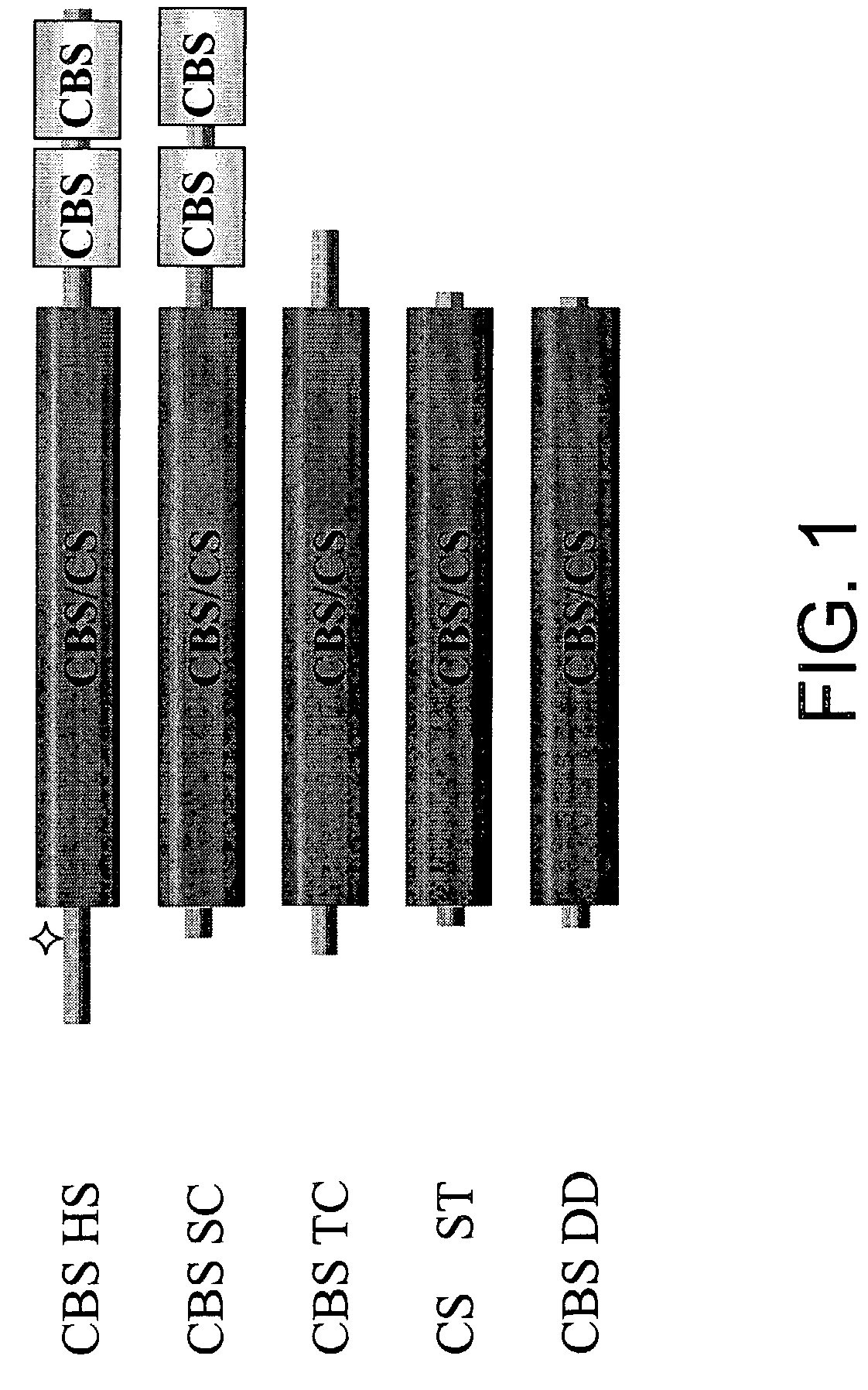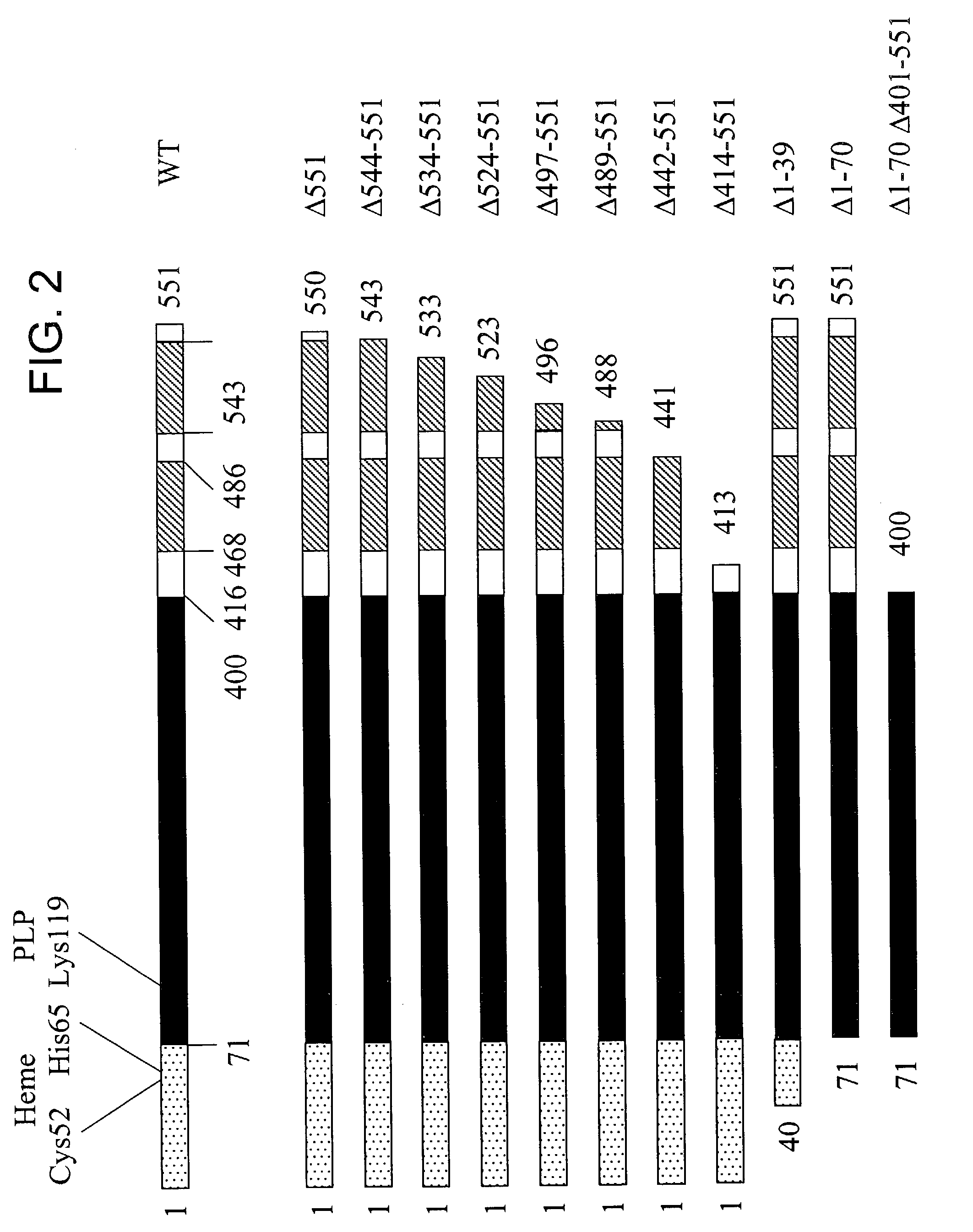Human cystathionine beta-synthase variants and methods of production thereof
a technology of human cystathionine beta-synthase and synthase, which is applied in the direction of lyases, metabolism disorders, antibody medical ingredients, etc., can solve the problems of serious consequences, high homocysteine levels in plasma, tissues and urine, and so as to reduce the ability to bind heme
- Summary
- Abstract
- Description
- Claims
- Application Information
AI Technical Summary
Benefits of technology
Problems solved by technology
Method used
Image
Examples
example 1
[0153]The following example describes the expression analysis of the human CBS deletion mutants in E. coli.
[0154]Unlike the well-conserved catalytic core, both the ˜70 amino acid N-terminal and ˜150 amino acid C-terminal regions of human CBS do not share any homology with CS and CBS enzymes from other organisms (FIG. 1). Referring to FIG. 1, the double deletion mutant is included in the scheme to illustrate the near identity of the Δ1-70 Δ401-551 (referring to SEQ ID NO: 2) human truncated CBS species to CS enzymes. Filled boxes represent conserved domains, flat lines denote non-conserved regions. The area designated “CBS / CS” represents a highly conserved region present in both CBS and CS enzymes; this region also displays significant structural conservation with several other members of the β family of the PLP-dependent enzymes such as serine / threonine deaminases and β subunit of tryptophan synthase (Meier et al., 2001, Embo J. 20(15), 3910-6). In human CBS, this region comprises ...
example 2
[0159]The following example shows the effects of truncations on CBS activity.
[0160]Relative enzyme activities were determined for all of the various deletion mutants by assaying crude cell lysate soluble fractions for CBS activity in the presence and absence of 1 mM AdoMet. The activities were normalized to the amounts of expressed CBS protein as determined by the densitometric scanning analysis of a Western blot of the cell lysate soluble fractions. Specific activities of all deletion mutants were expressed as a percentage of the wild type activity determined in the absence of AdoMet, which was considered to be 100% (Table II). The calculated specific activity for the wild type enzyme derived from this analysis was 213±19 U / mg which is strikingly consistent with the value of 220 U / mg that was determined previously for the purified recombinant wild enzyme (Kery et al., 1998, supra).
[0161]
TABLE 2RelativeAdoMetactivityactivationOligomericHemeCBS mutant[%][x-fold]statusbindingWT, 1-551...
example 3
[0165]The following example describes the effect of truncations on the oligomeric status of CBS.
[0166]Previous work from the present inventors' laboratory and others has indicated that the region responsible for the assembly of CBS subunits into tetramers is located in the C-terminal region of CBS (Kery et al., 1998, supra; Shan et al., 1998, Nat. Genet. 19, 91-93). Recently, work from another group has suggested that the formation of CBS tetramers may involve residues outside of the C-terminal domain (Nozaki et al., 2001, supra). The series of deletion mutants generated in this present study provided the inventors with a useful tool to further delineate the region(s) of CBS associated with the formation of tetramers. In order to determine the oligomeric status of all of the present deletion mutants, soluble fractions of cell extracts were analyzed by native PAGE followed by Western blotting (results not shown). A cell lysate derived from E. coli containing no expression plasmid was...
PUM
| Property | Measurement | Unit |
|---|---|---|
| Fraction | aaaaa | aaaaa |
| Fraction | aaaaa | aaaaa |
| Fraction | aaaaa | aaaaa |
Abstract
Description
Claims
Application Information
 Login to View More
Login to View More - R&D
- Intellectual Property
- Life Sciences
- Materials
- Tech Scout
- Unparalleled Data Quality
- Higher Quality Content
- 60% Fewer Hallucinations
Browse by: Latest US Patents, China's latest patents, Technical Efficacy Thesaurus, Application Domain, Technology Topic, Popular Technical Reports.
© 2025 PatSnap. All rights reserved.Legal|Privacy policy|Modern Slavery Act Transparency Statement|Sitemap|About US| Contact US: help@patsnap.com



